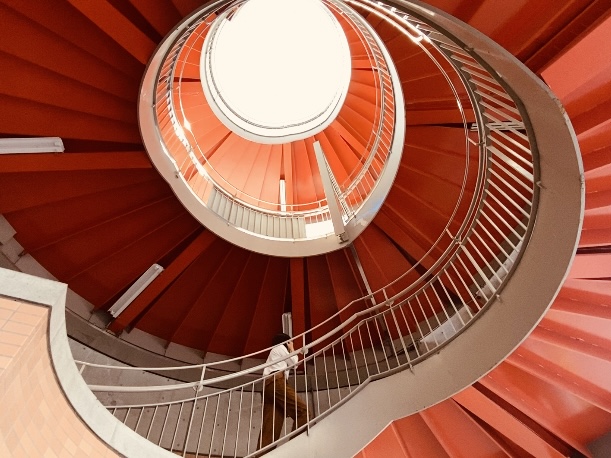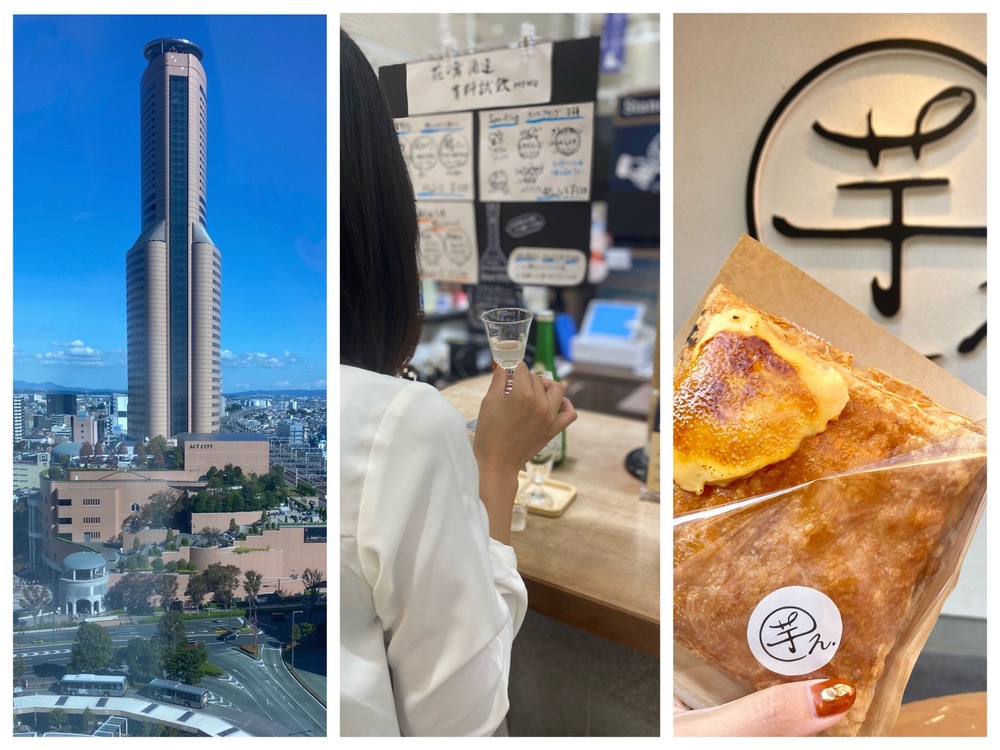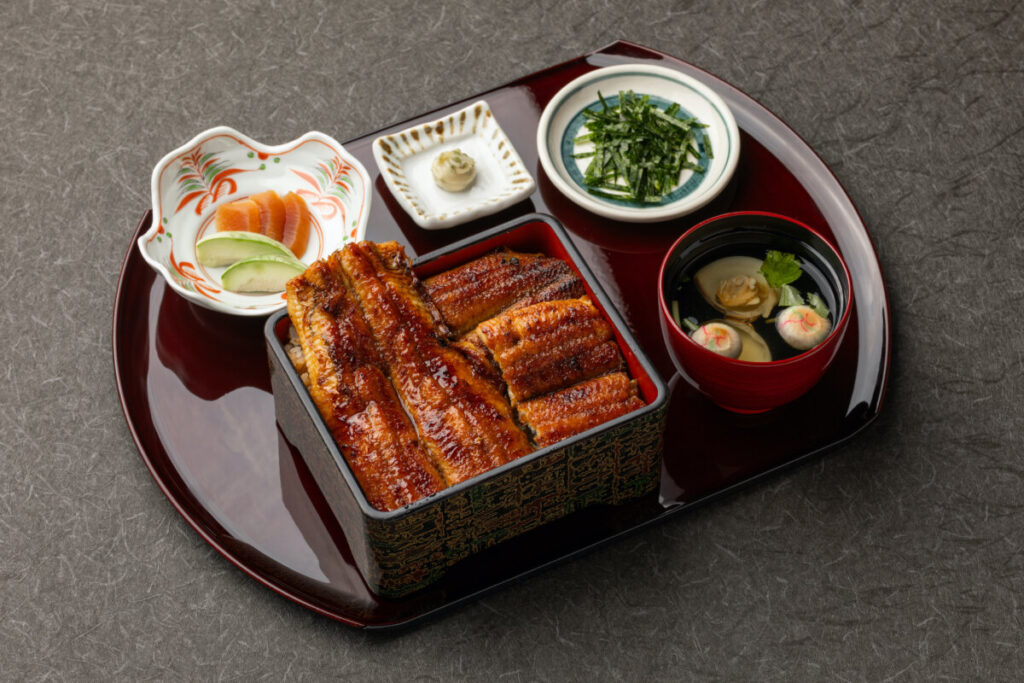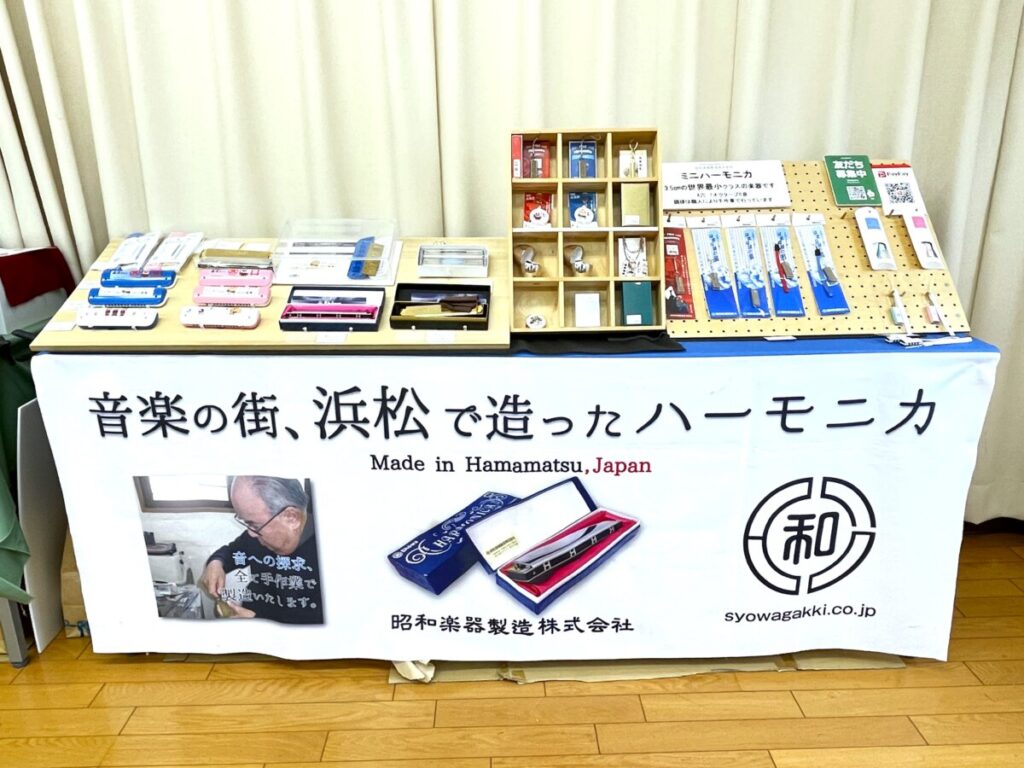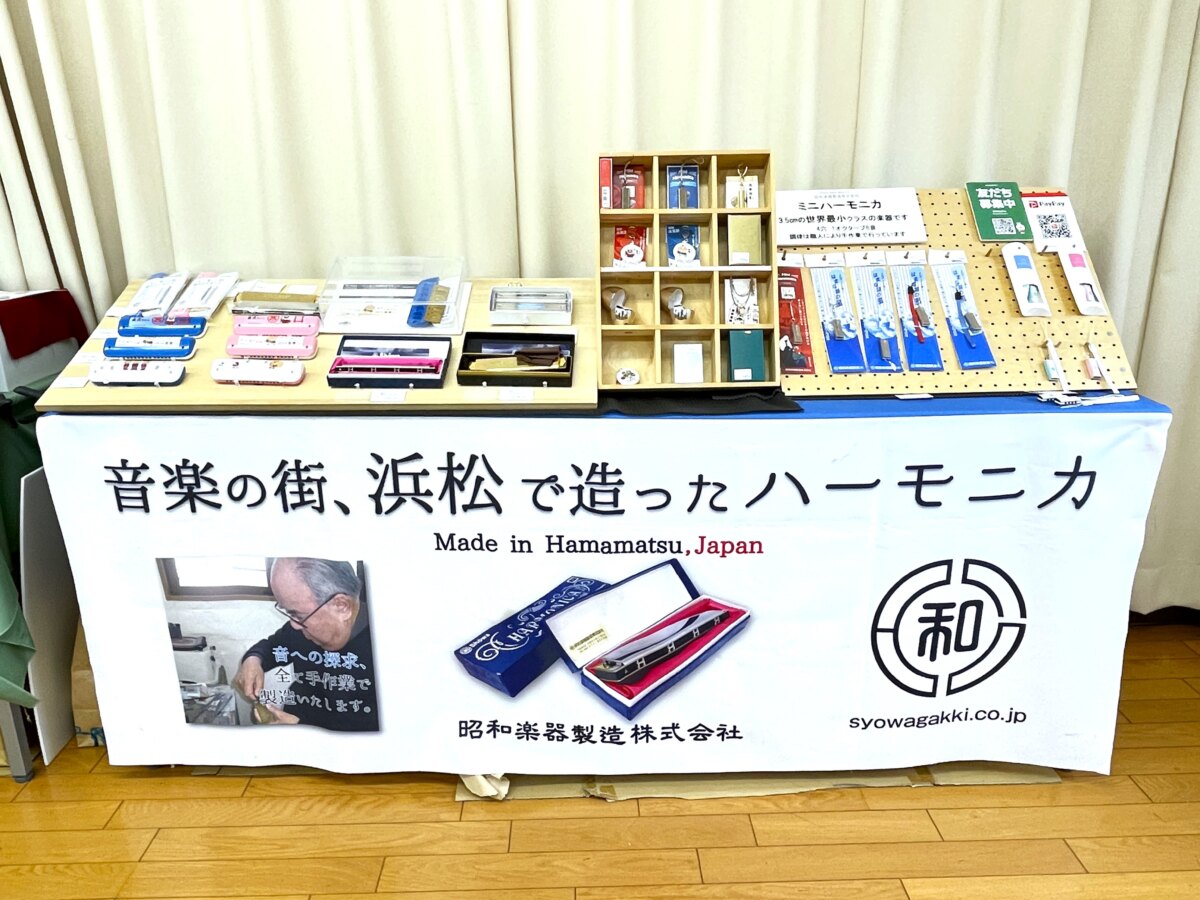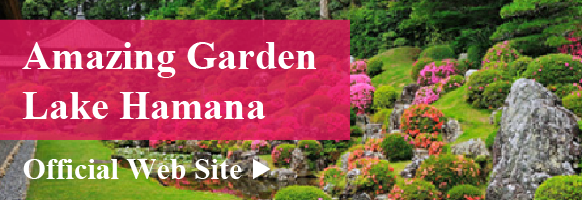Get to Know Hamamatsu

- Watch
A Nostalgic Tour Along the Tenhama Line in Shizuoka
After sightseeing and dining near Hamamatsu Station, embark on a tour along the local Tenhama Line to enjoy views preserved from the past.
Attractions Visible on the Tenhama Line
The Tenryu Hamanako Railroad, or Tenhama Line, runs from east (Kakegawa Station in Kakegawa City) to west (Shinjohara Station in Kosai City). The railroad stretches for 67.7 kilometers, operating through the Tenryu Futamata area of Hamamatsu and the northern side of Lake Hamana.
To board the Tenhama Line, take the Enshu Railway from Shin-Hamamatsu Station to Nishikajima Station, and switch trains.
Nostalgic Scenery! Places to Visit Along the Tenhama Line
When riding the Tenhama Line, passengers can view Lake Hamana, as well as lush greenery in the summer and vibrant foliage in the autumn.
There are various sightseeing spots along the line. The Tenryu Futamata area is home to a well-preserved townscape, old railroad station, fruit-picking park, unique cafe, and historic temples!
This article features the Tenhama Line and all of its charms.
Tenryu Futamata Station: Railway History and Traditional Townscapes
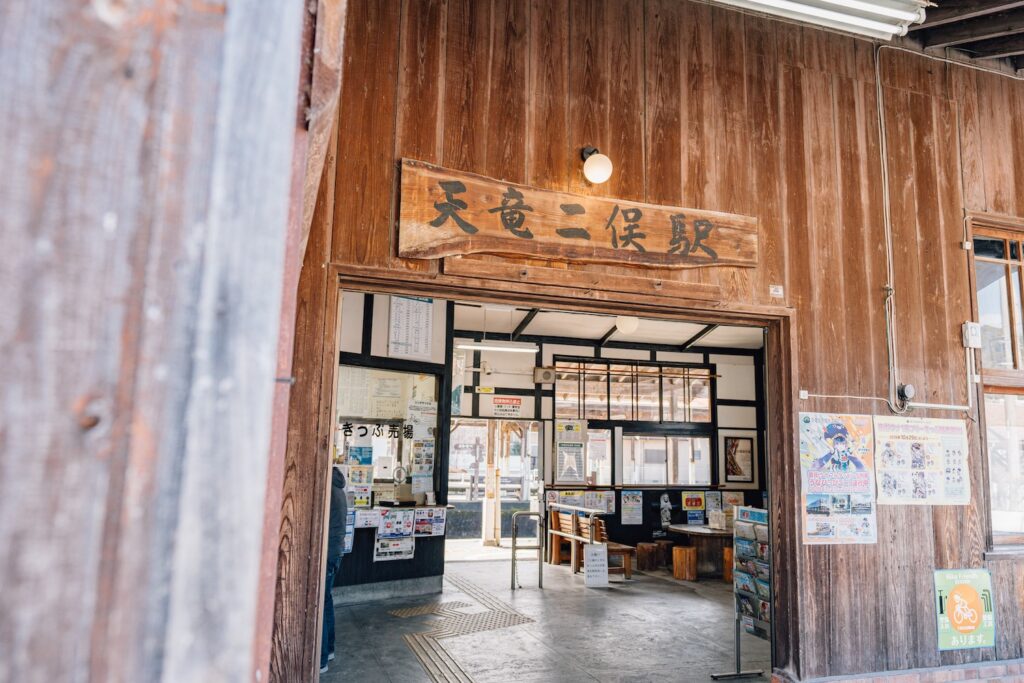
The Tenhama Line, formerly known as the Futamata Line, has a history spanning 80 years since operation began in 1940. Most of the platforms and station buildings from that period are still in use. There are even 36 Tangible Cultural Properties along the line.
Tenryu Futamata Station, which is also the headquarters of Tenryu Hamanako Railroad, is one of these legacy buildings. It’s a popular destination for tourists on holiday with many sightseeing and dining spots within walking distance.
A Historical Train Platform! Taking in the Legacy
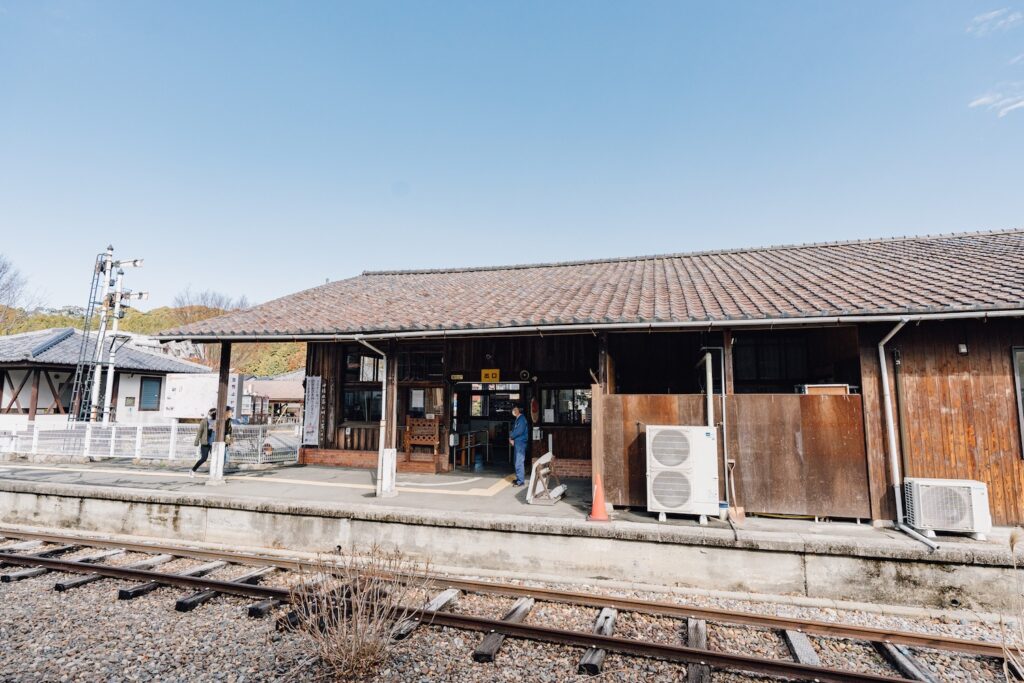
The retro station building and platform catch the eye of visitors. They are both historical relics beautifully preserved from 1940.
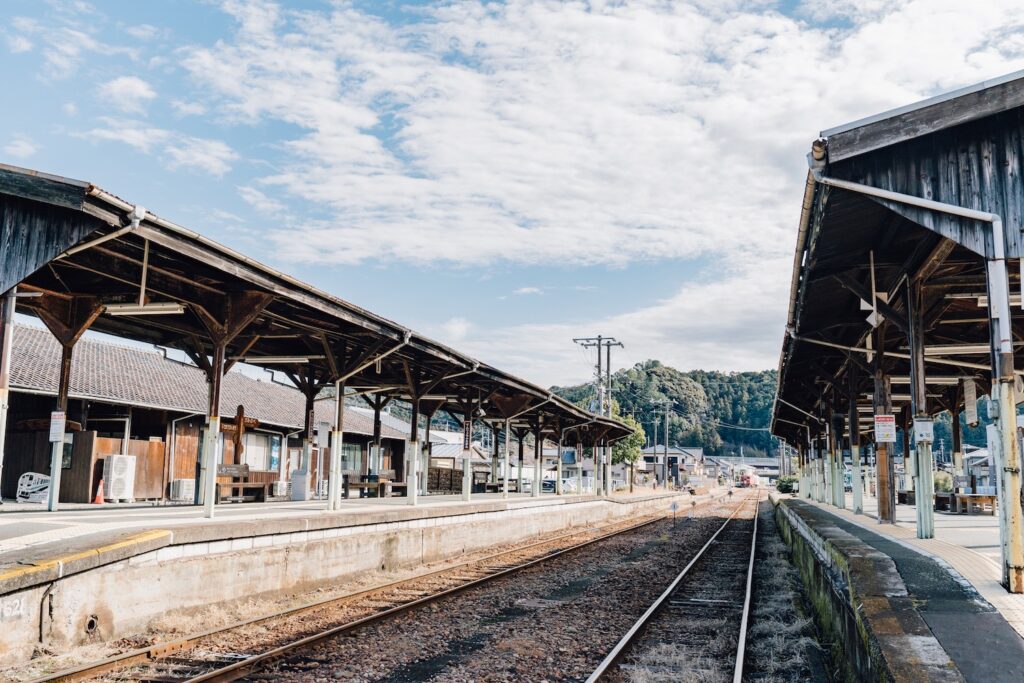
Wooden platform roofs
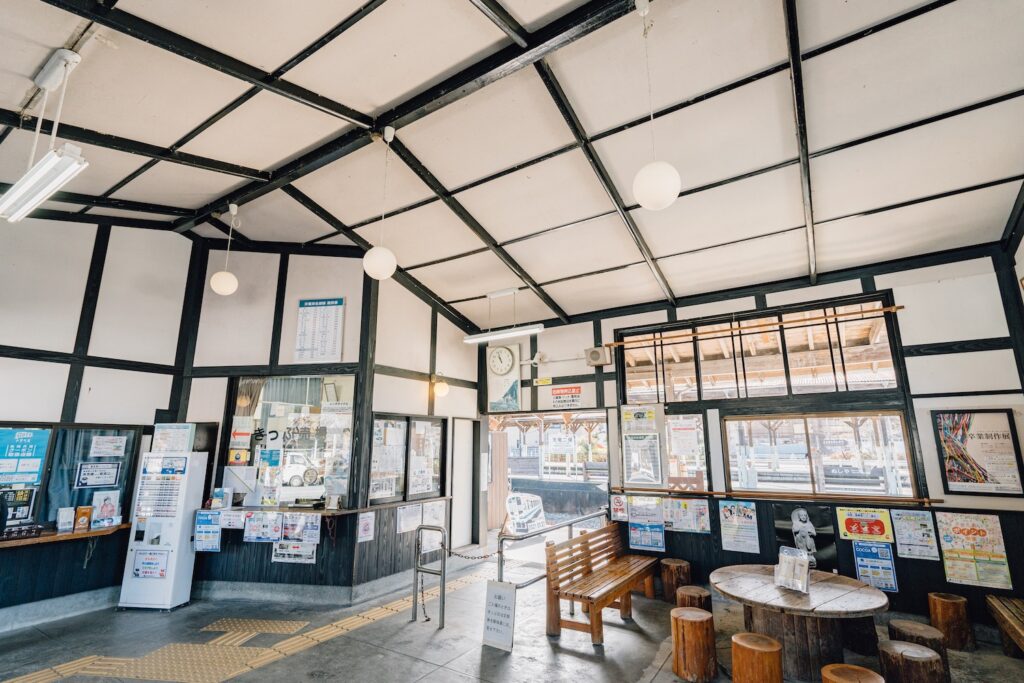
Station interior
Visitors can also join a tour to view the turntable for steam locomotives. Constructed in 1940, the turntable—a registered tangible cultural property—is still used at Futamata Tenryu Station, which also operates as a rail yard.
Held daily and popular with all ages, the tour includes a visit to the train depot and museum. The turntable is located in the rail yard and can only be accessed by tour participants.
The turntable tour starts at 10:50 and 13:50 on weekends and public holidays. The tour begins from 13:50 on Mondays through Fridays.
Reservations are not required, so participants should head to the waiting room in Tenryu Futamata Station.
Please note that the “Aratte, Mawatte, Densha de Go” tour, which starts from 11:00 on the weekends and holidays, requires a reservation. Participants can also enjoy a ride on the train during this tour.
.jpg)
Tenryu Futamata Station (Tenryu Hamanako Railway)
Constructed in 1940, this wooden station building is registered as a National Tangible Cultural Property. It features a railroad turntable and a roundhouse (Nationally Registered Tangible Cultural Property). Both are considered to be unique and rare, adding to the station's nostalgic flavor.
Marukawa no Kura: A Gallery in a Traditional Home
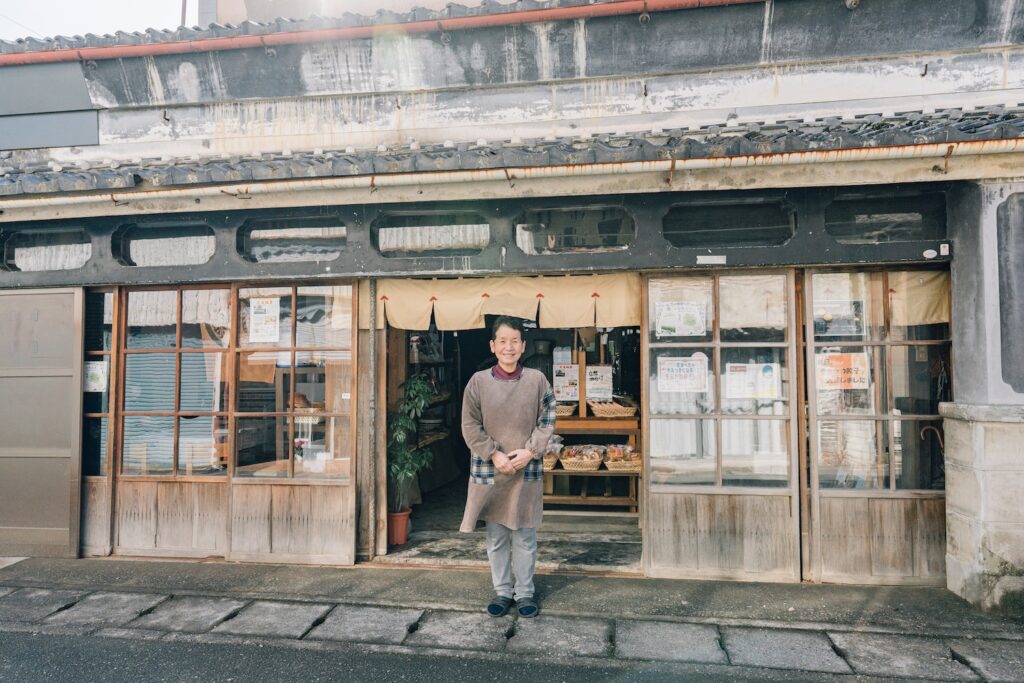
The shop owner, Ms. Motojima
A short walk from the station will bring you to an area dotted with well-preserved buildings.
Marukawa no Kura is a gallery renovated from a building constructed over 140 years ago. It was formerly a liquor shop.
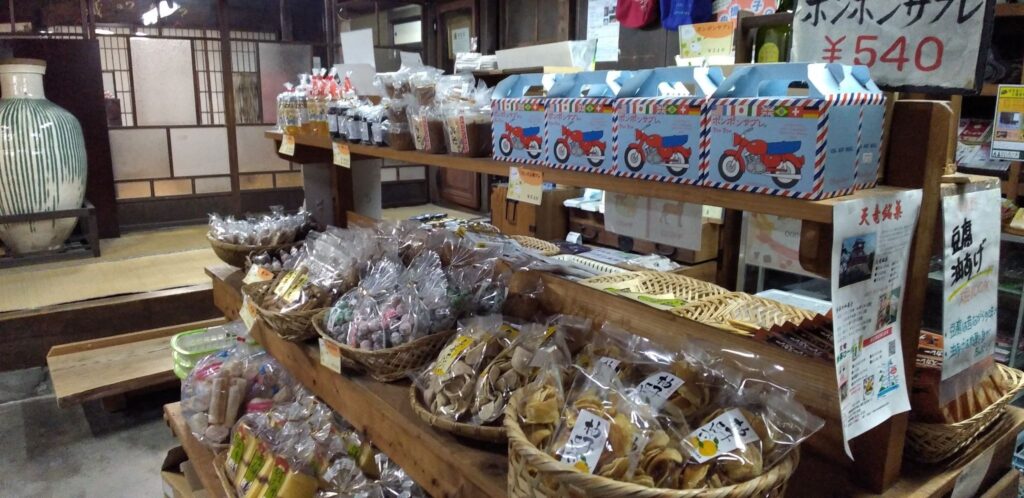
A display case lined with local confections and miso paste products.
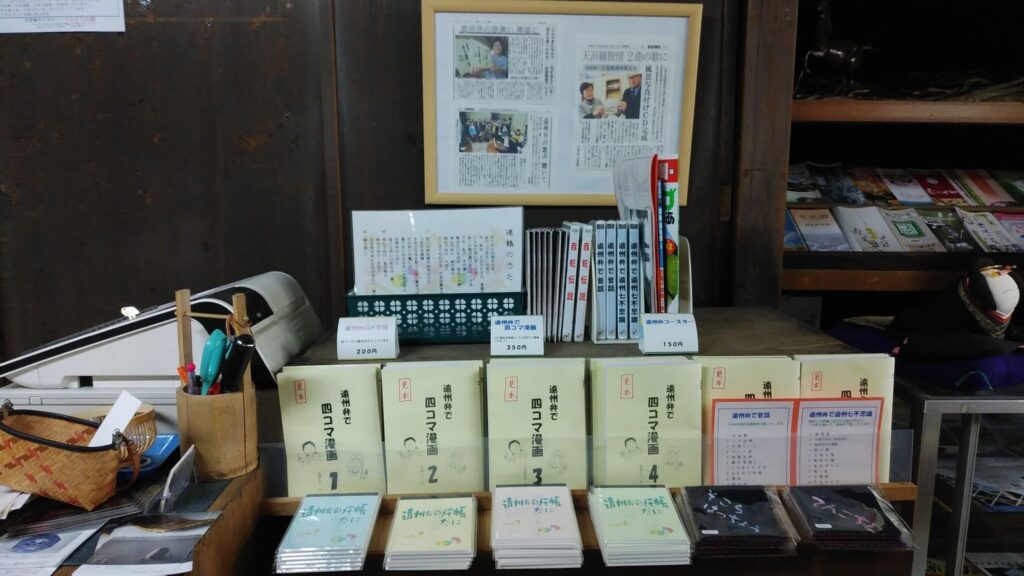
A section featuring Enshu-ben (the Enshu dialect).
The first-floor storefront is filled with old-fashioned confections, homemade miso, and tea.
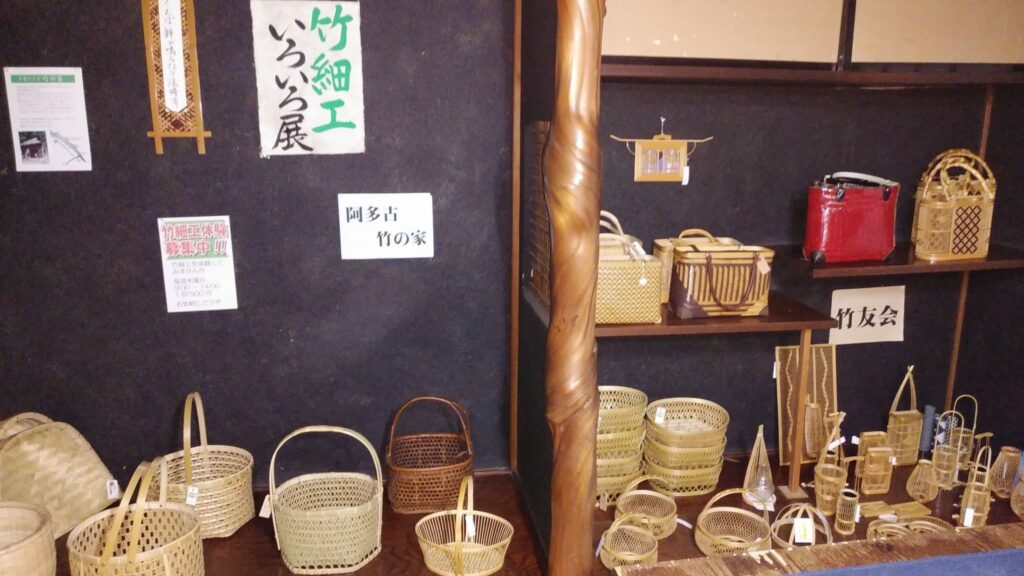
The three-storied gallery is filled with works by artists residing in the Tenryu Futamata area.
They also host monthly events.
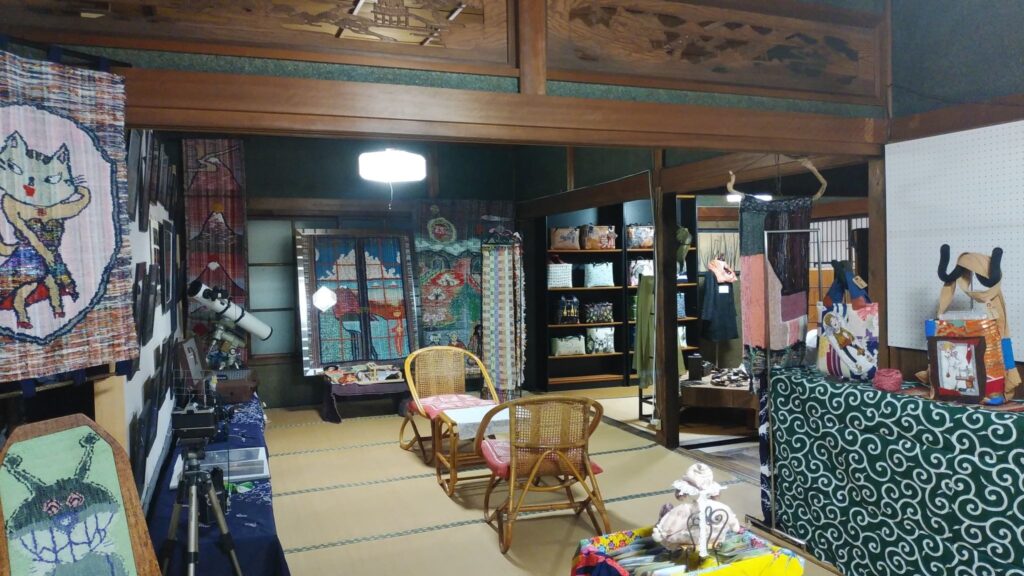
The gallery’s interior is also well-preserved, and has a lively atmosphere. You’ll spot many overseas visitors enjoying a look around the premises.
Soichiro Honda Craftsmanship Center: See Crafts by Remarkable People
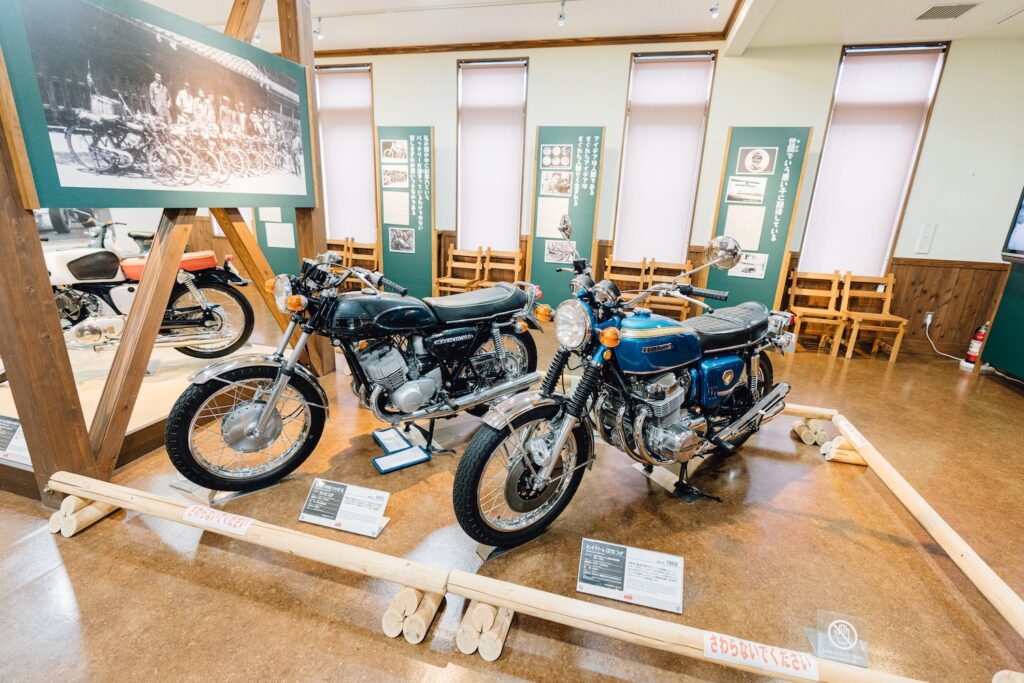
At this facility, visitors can learn about Soichiro Honda, the founder of the global auto company Honda.
The Soichiro Honda Craftsmanship Center is located in the Tenryu District of Hamamatsu City, the automobile manufacturer’s birthplace.
After working at an auto-repair shop in Tokyo, Mr. Honda opened his own factory and sold engine-assisted bicycles, which became the main products of the Honda Company.
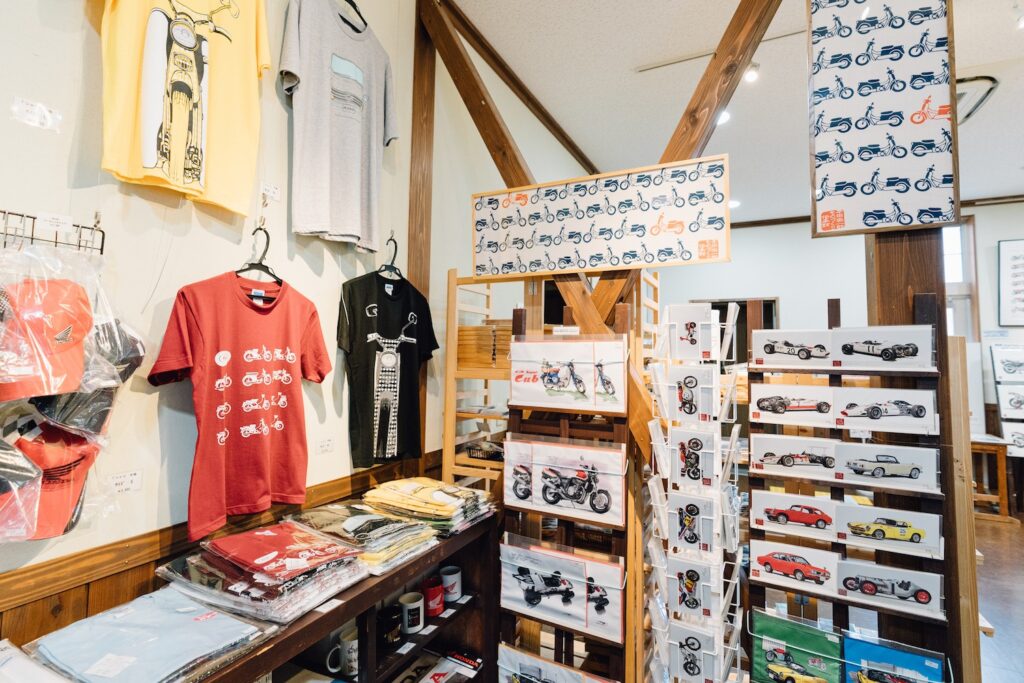
Souvenirs sold at the center.
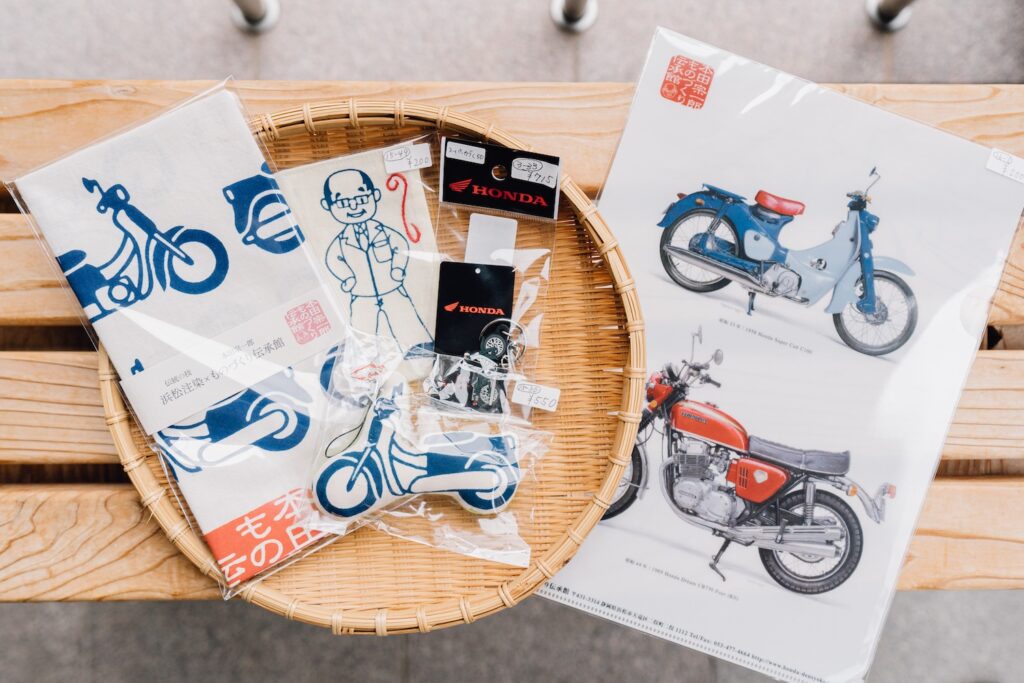
Souvenirs sold at the center.
The life story of Mr. Honda and the motorbikes he created are on display at this facility. There are also souvenirs related to his works that make lovely gifts.
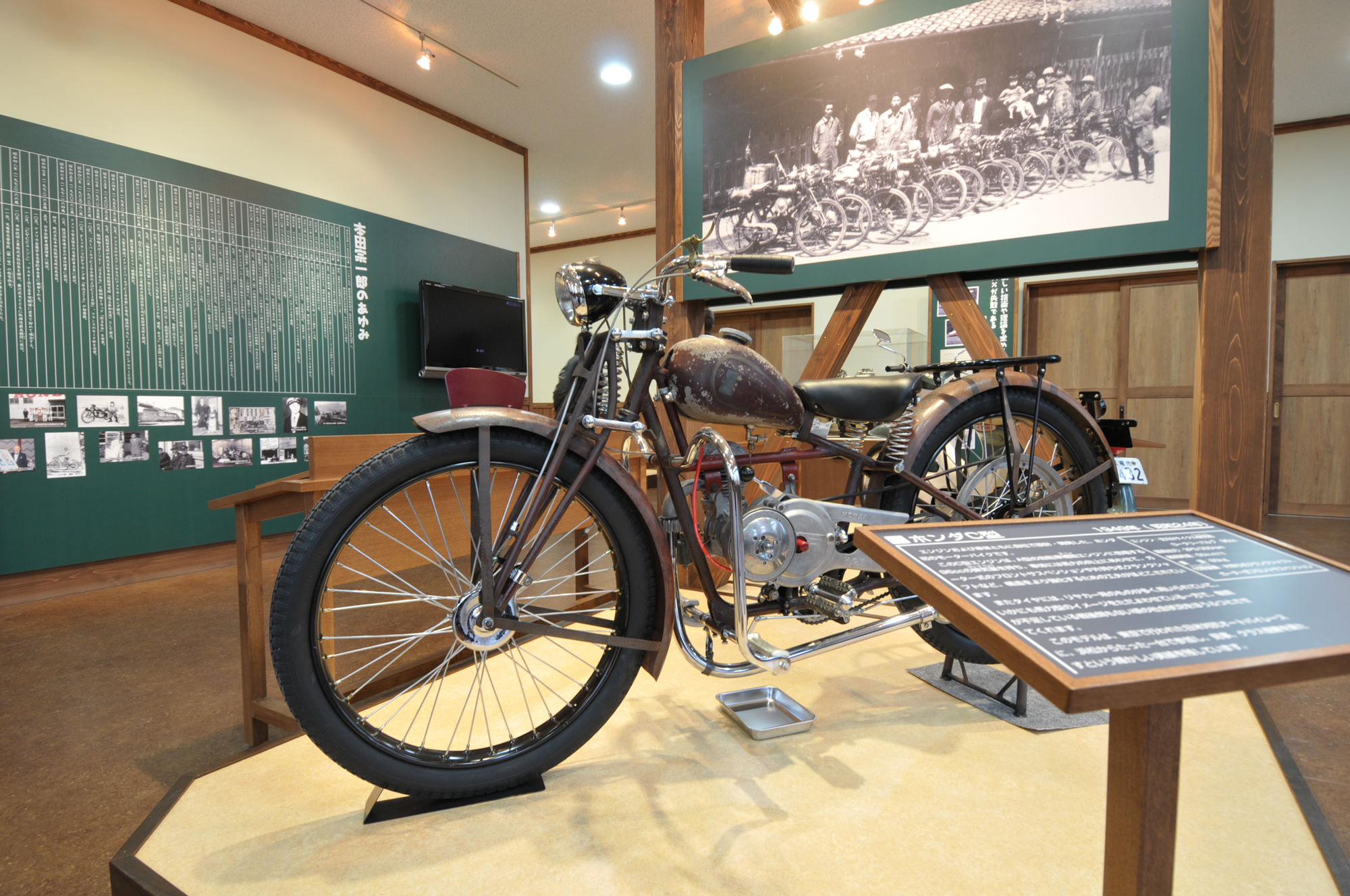
Soichiro Honda Craftsmanship Center
Soichiro Honda (1906-1991), born in Tenryu City, was the founder of the Honda Motor Company. At this facility, visitors are introduced to Soichiro's personality and way of life, and also his spirit of craftsmanship. Honda's many innovations including engines and motorbikes, are on display here.
Futamata Castle Ruins and Seiryuji Temple: Two Must-See Historical Spots
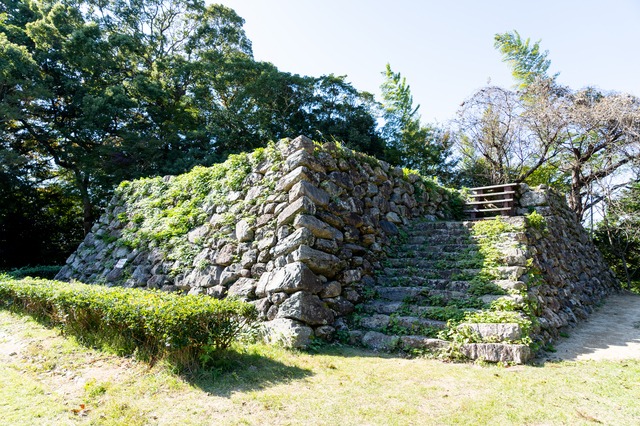
Photo by Pixta
Futamata Castle is where Tokugawa Nobuyasu was ordered to commit seppuku (ritual suicide) after being suspected of treason.
He was the heir to Tokugawa Ieyasu, founder of the Tokugawa Shogunate.
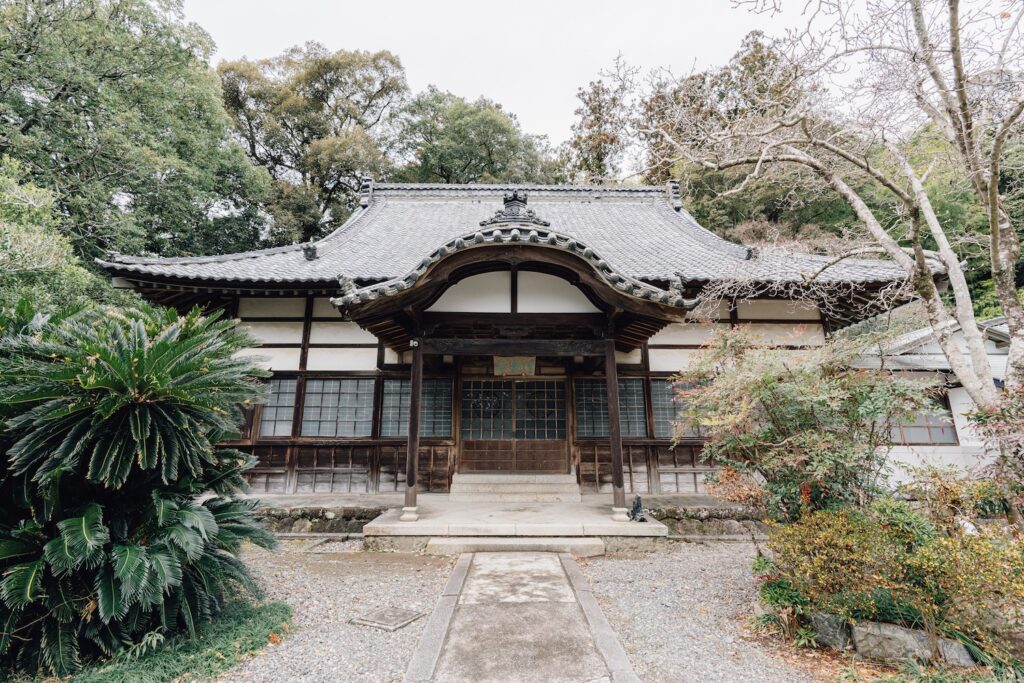
The main hall of Seiryuji Temple.
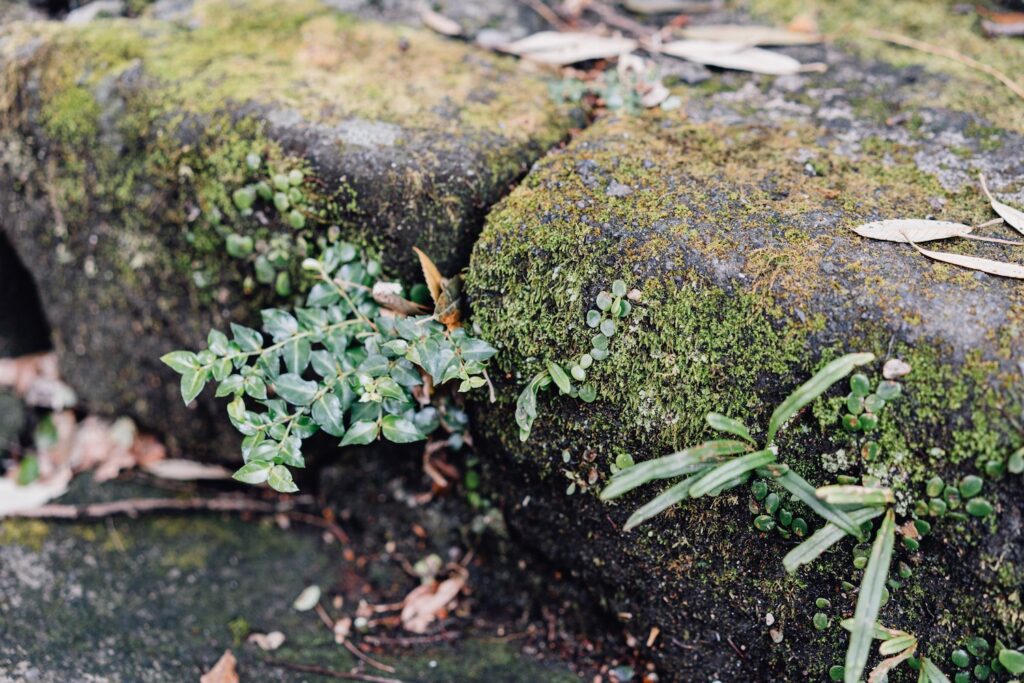
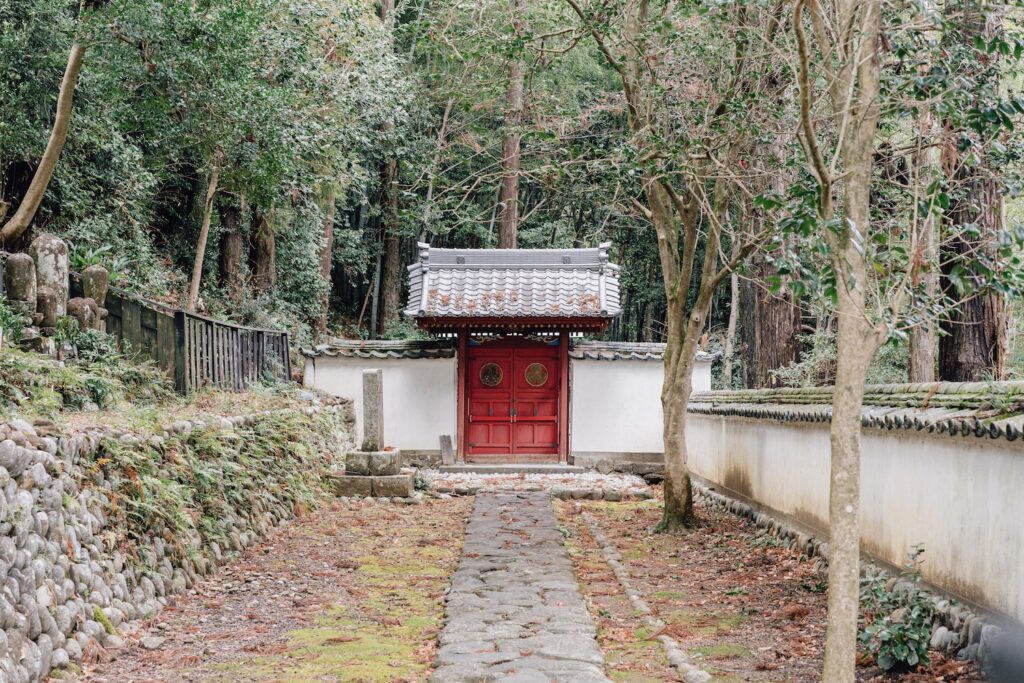
Nobuyasu’s tomb is located beyond the steps covered in moss.
Seiryuji, where Nobuyasu was buried, is located a short distance from the ruins of Futamata Castle. The temple is said to have been built by Ieyasu to repose the soul of Nobuyasu.
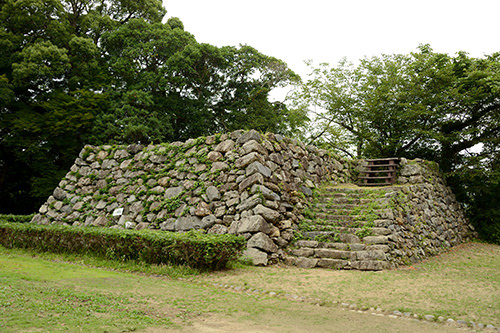
Futamata Castle Ruins
Futamata Castle was built by Futamata Masanaga, a retainer for the Imagawa clan who owned the land. This was also the site for many battles between the Tokugawa and Takeda clans. The castle is known as the place where Lord Tokugawa Ieyasu forced his oldest son, Nobuyasu, to commit seppuku (suicide) upon warlord Oda Nobunaga's wishes.
Charming Interior! Coffeetime at Miyakoda Station Cafe
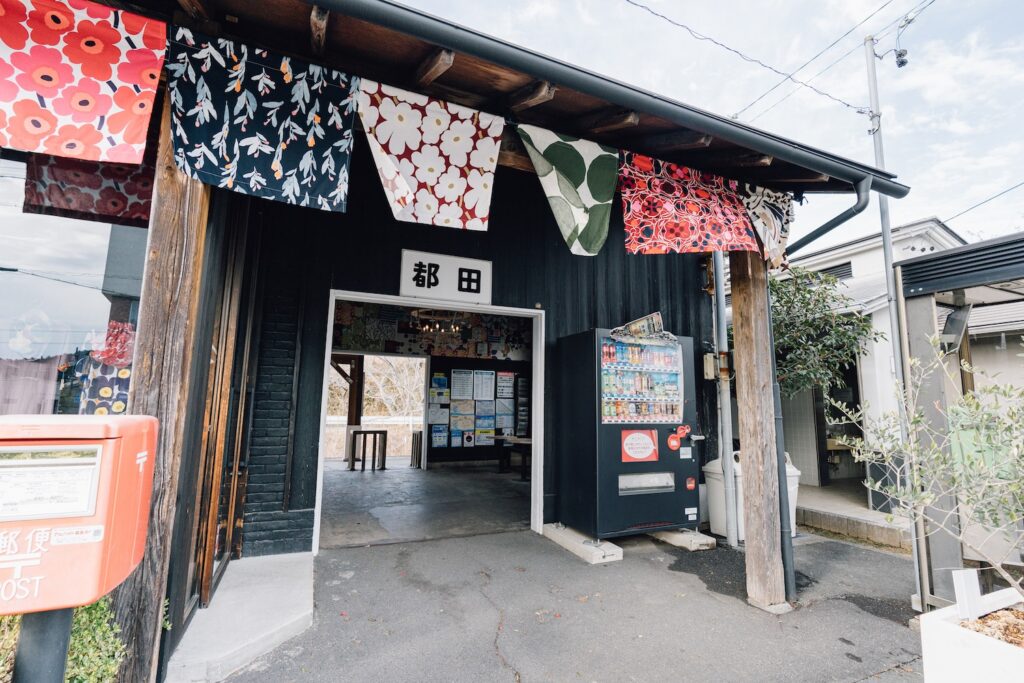
There are a few stations along the Tenhama Line that feature unique eateries.
Miyakoda Station Cafe is one of them. The wooden panels are decorated with eye-catching Marimekko fabric made in Finland. Coffee and homemade cookies are also served on Marimekko tableware.
In addition to the table seating, there are terrace seats without partitions near the platform. The station waiting room also has a chandelier and is decorated with colorful fabric. Visitors will wonder whether they are waiting for a train or taking a coffee break! This is truly a one-of-a-kind destination.
Sipping a cup of coffee while marveling at the serene scenery will certainly put visitors at ease.
DLoFre’s Miyakoda Construction, which operates the cafe, also manages Finland Village, located near the station. Displaying an authentic Nordic atmosphere, the facility consists of the Marimekko Gallery, a cafe, and a hotel. Be sure to take a look!
Miyakoda Station Cafe
5563-21 Miyakoda-cho, Kita-ku, Hamamatsu-shi, Shizuoka-ken
Open from 11:00 to 16:00 (Last order at 15:30)
Closed on Tuesdays, Wednesdays, and Thursdays
Hamanako-Sakume Station: Meet the Seagulls!
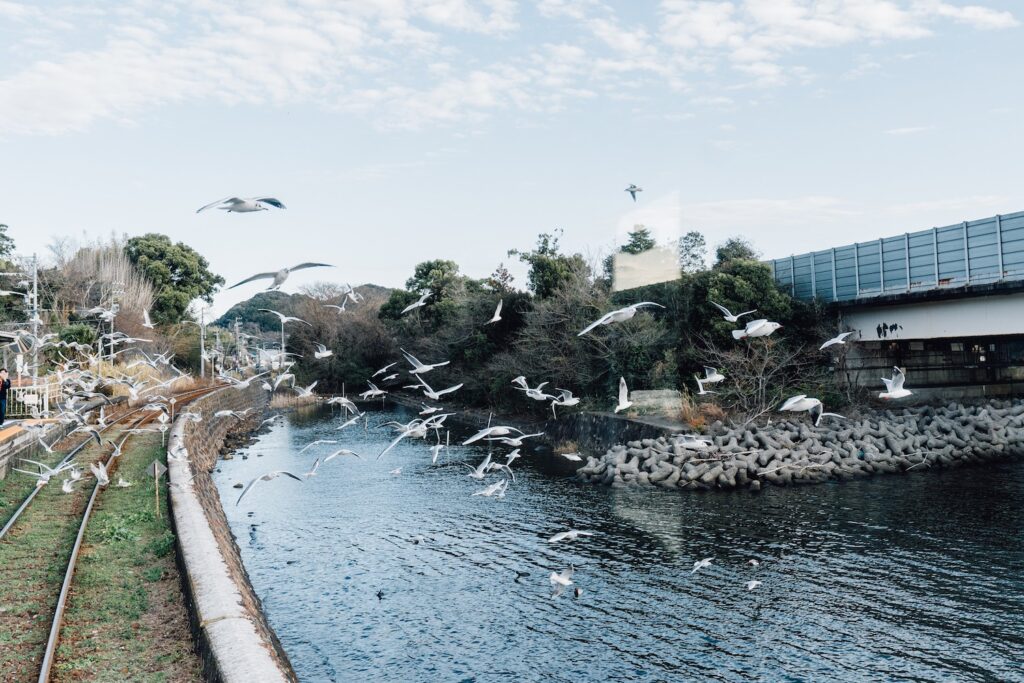
Black-headed gulls spotted from the train window.
Hamanako-Sakume is a small, unattended station that is famous for black-headed gulls taking flight between December and February. Watching the gulls flying against the backdrop of Lake Hamana is awe-inducing.
Up close, the birds are also quite cute.
Other Recommended Spots along Tenhama Line
The following are some other attractive spots along Tenhama Line.
Hamamatsu Fruit Park Tokinosumika: Taste Fresh Shizuoka Fruit
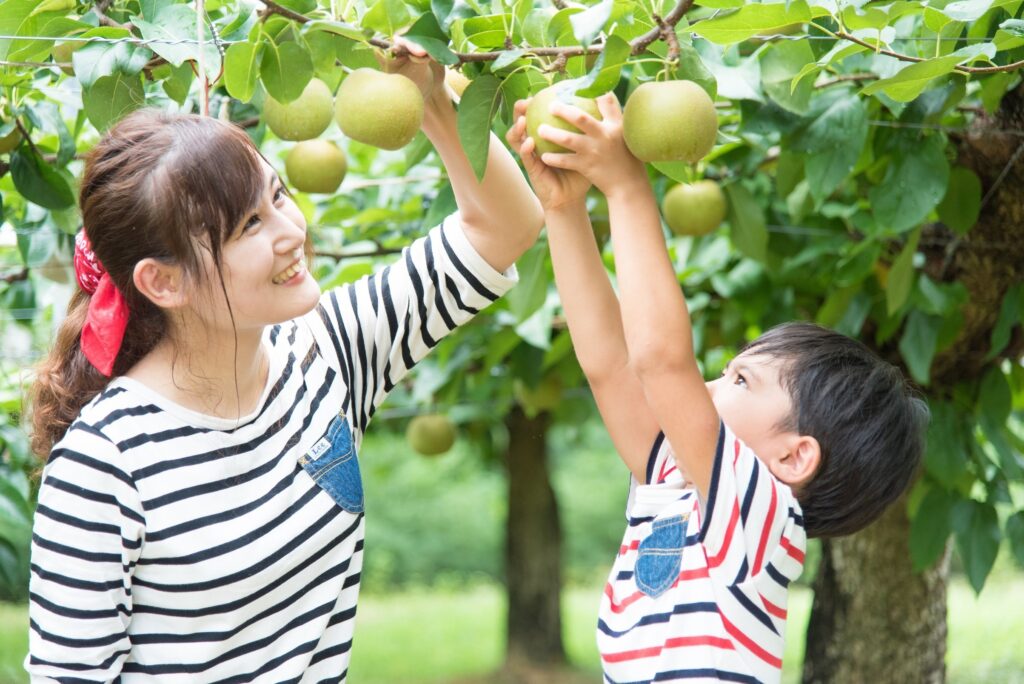
Picture courtesy of Hamamatsu Fruit Park Tokinosumika
This beautiful orchard is an eight minute walk from Fruit Park Station. Thanks to the warm climate of Hamamatsu, visitors can enjoy picking 15 types of fruit, including strawberries, cherries, peaches, and grapes.
The picked fruits are sold by weight. As the produce season changes, visitors will be able to taste a wide variety of fruits.
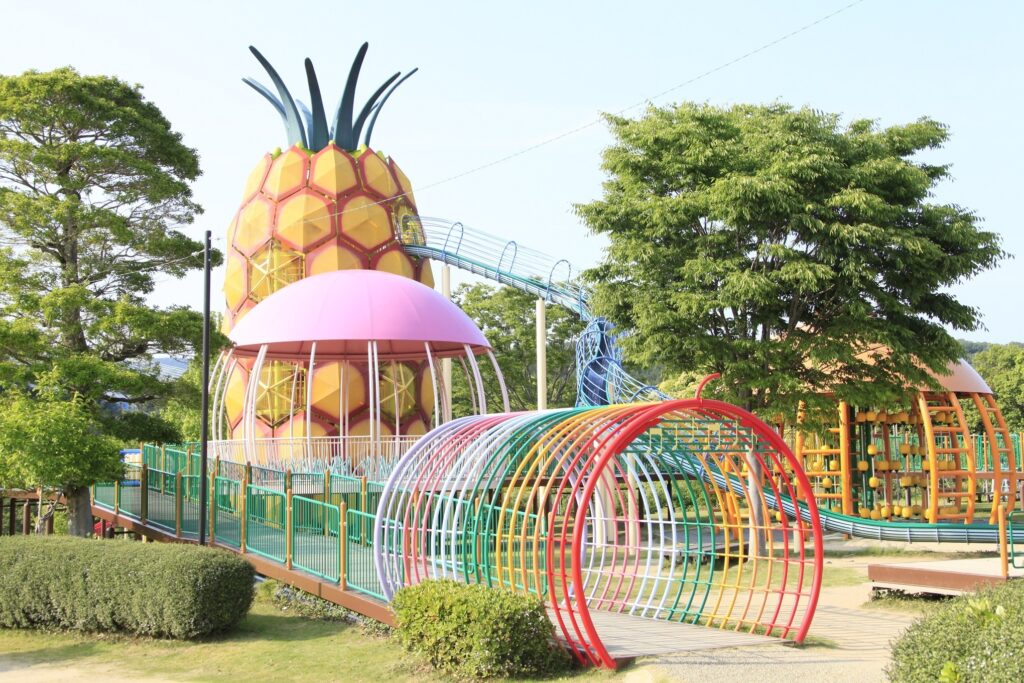
Picture courtesy of Hamamatsu Fruit Park Tokinosumika

Picture courtesy of Hamamatsu Fruit Park Tokinosumika
There is also a winery and buffet-style restaurant serving various dishes, desserts, and tasty produce. Don’t miss out on the souvenir shop, which sells fruit, wine, and original confections!
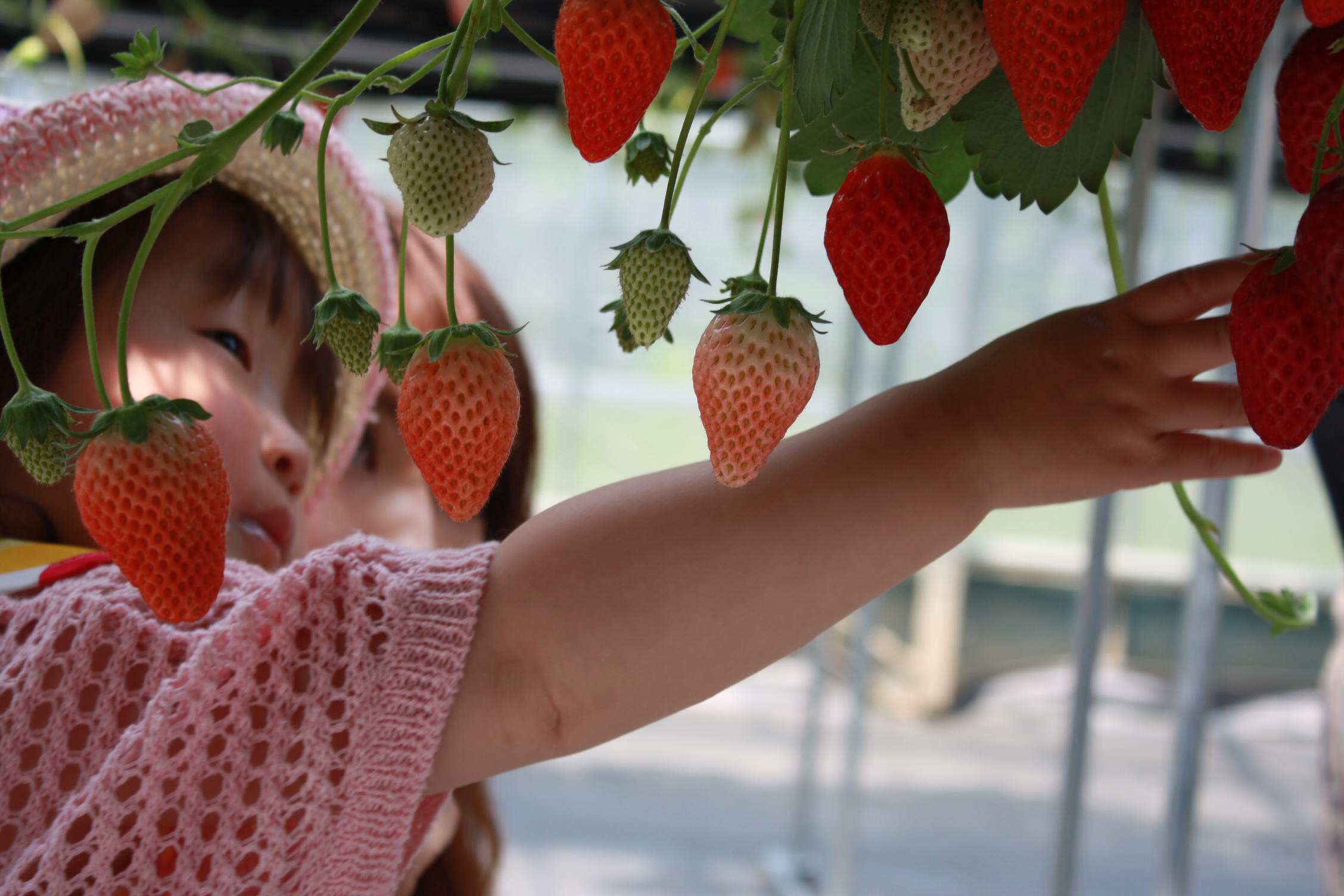
Hamamatsu Fruit Park Toki-no-Sumika
This fruit theme park offers everything from greenhouse exhibits displaying fruit cultivation to restaurants and an orchard. Each season, visitors are invited to pick a variety of fruit. There is also a water fountain show and an activity area featuring a large playground, among other attractions.
Ryotanji Temple: Relish Lovely Cherry Blossoms and Fall Leaves
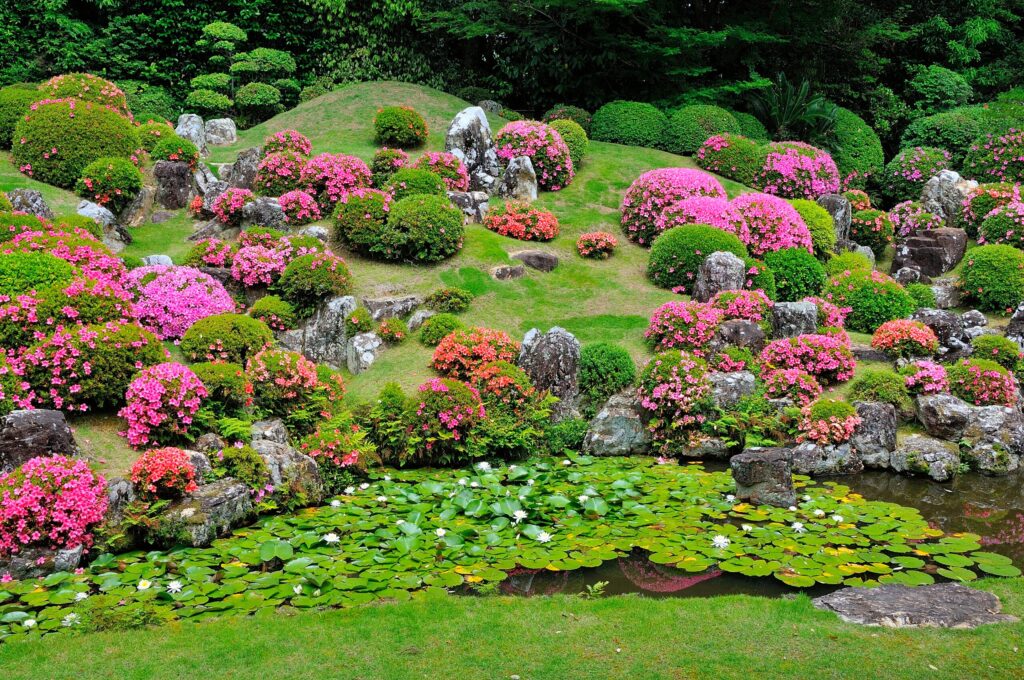
Picture courtesy of Ryotanji Temple
Ryotanji, located five minutes by car from Kiga Station, was founded in 733. This is the family temple of the Ii clan, one of the prominent feudal lords of the Sengoku Period.
Built in the Edo Period, the main gate and hall, along with the magnificent Japanese garden, is well worth a look. Visitors can enjoy the garden throughout the year, with azalea blooming in spring, water lilies in the summer, and colorful foliage in autumn.
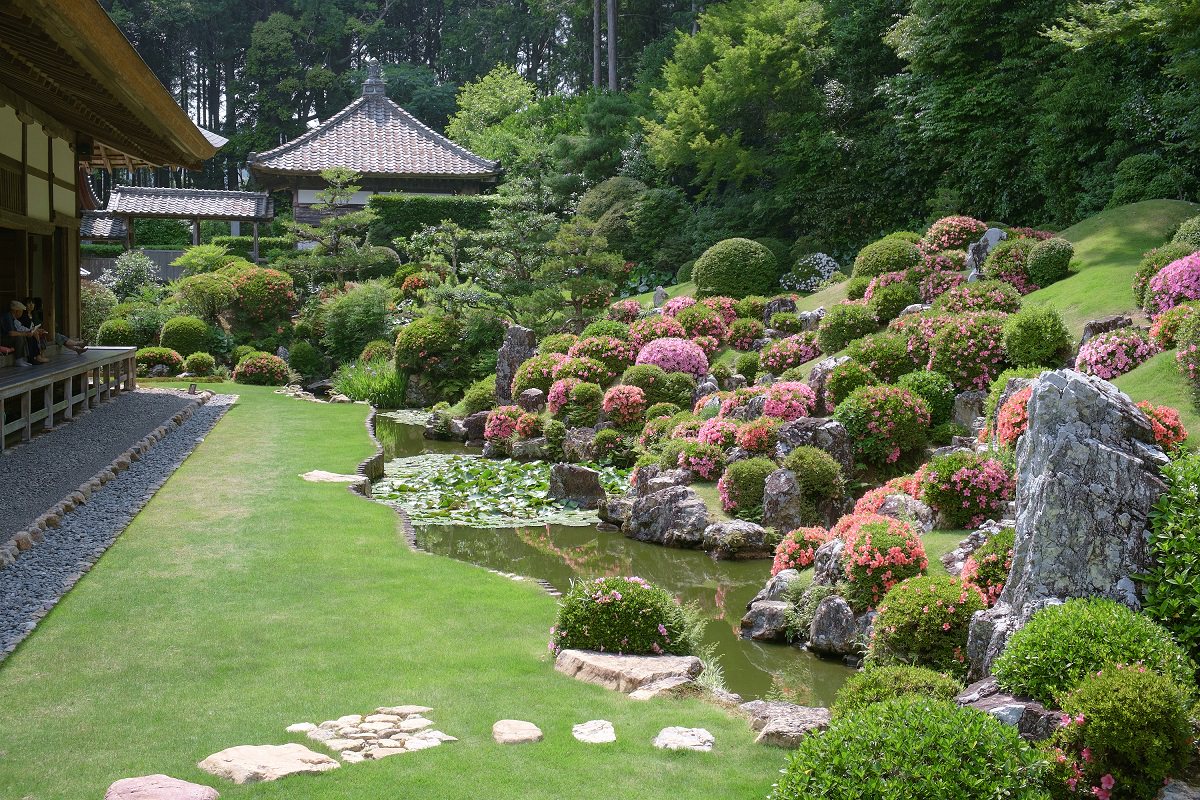
Ryotanji Temple
Ryotanji Temple was opened in 733 by the Japanese Buddhist priest Gyoki Bosatsu. There are many Important Cultural Properties, including the garden (designated a "Special Place of Scenic Beauty") designed by Kobori Enshu and the dragon sculpture carved by Hidari Jingoro. Ryotanji Temple served as a location for the NHK TV drama series "Naotora: The Lady Warlord." It is also an ancestral temple (Bodaiji) that honors 40 generations of the Ii family, including Lord Naosuke. This famous temple is one of five that make up the Kohoku Gozan (Five Temples North of the Lake).
Cape Prince: Take a Walk on a Small Peninsula
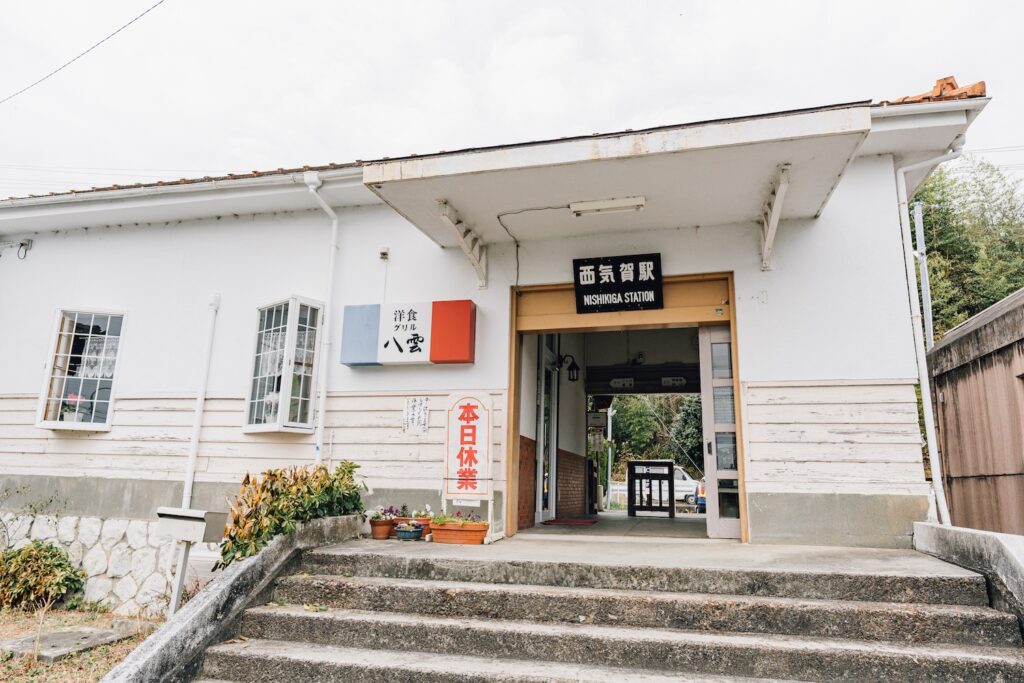
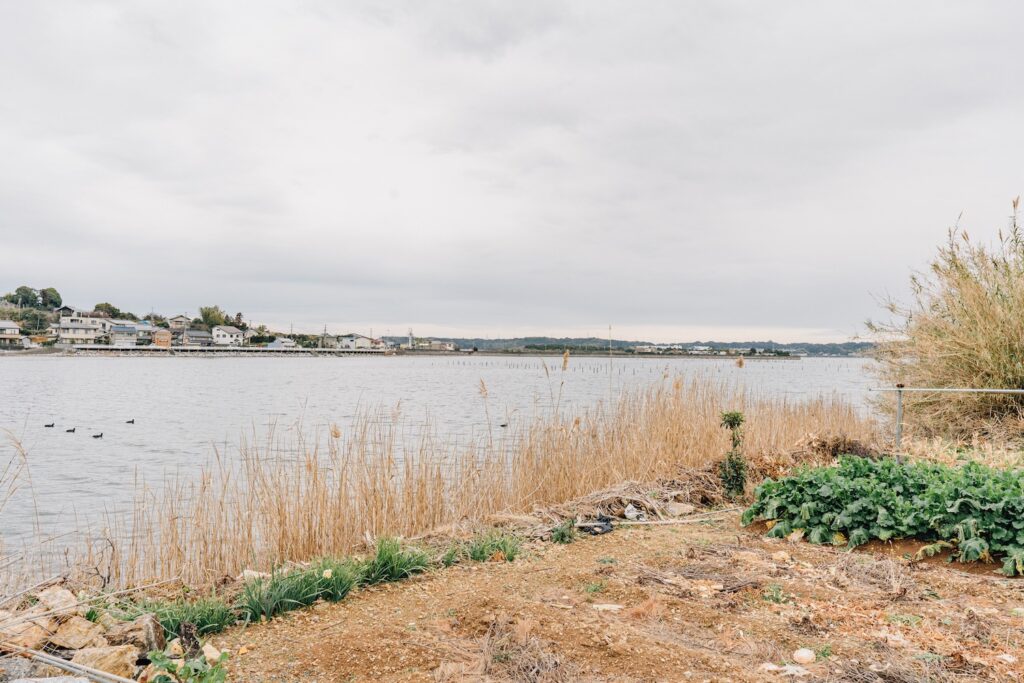
It takes about 15 minutes to walk around the Gomi Peninsula, located in front of Nishi-Kiga Station. Since the Japanese emperor spent his holidays as the Crown Prince at the nearby sanitarium, the area is called Cape Prince. With its idyllic scenery, this is the perfect spot to take a walk on days of lovely weather.
Visitors can enjoy retro station buildings along with historical spots and fruit-picking along the Tenhama Line. Come and experience a one-of-a-kind trip!
